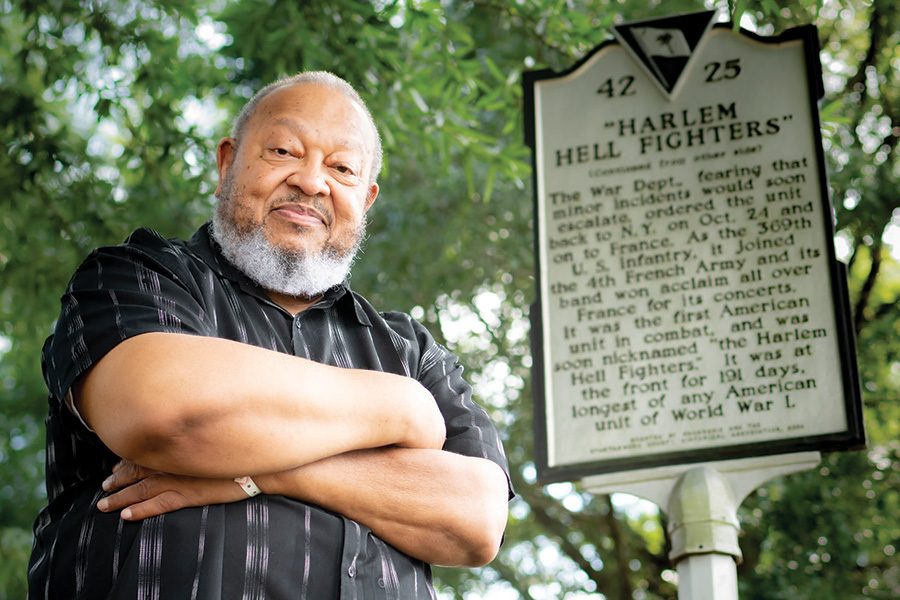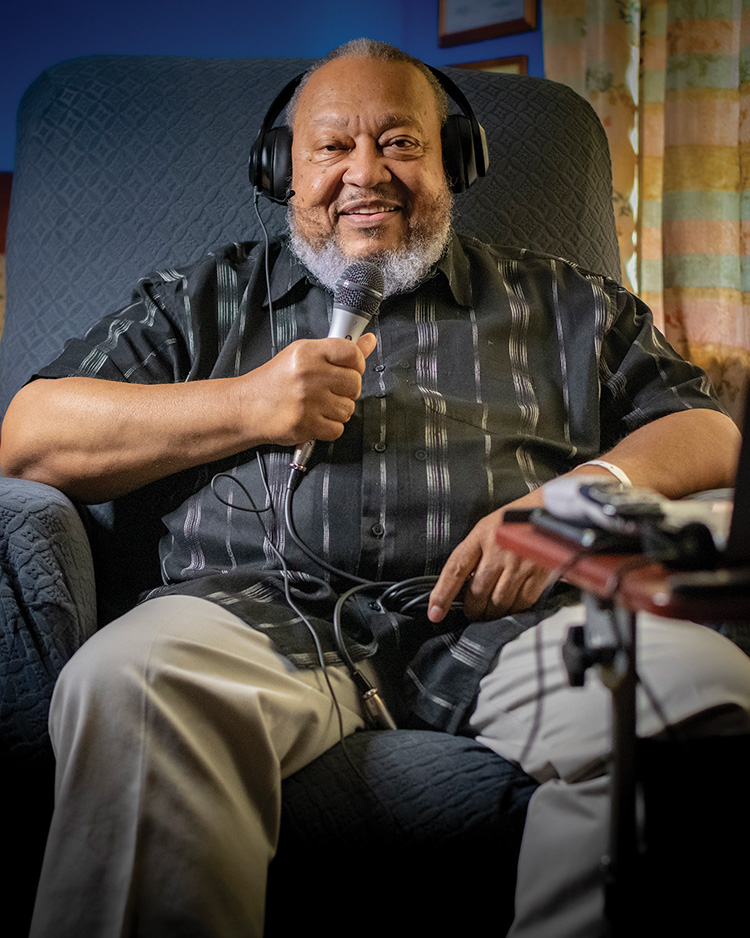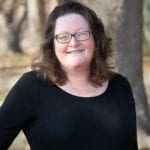
Home » Retired Hanford chemist now tells overlooked stories of Black excellence
Retired Hanford chemist now tells overlooked stories of Black excellence

April 16, 2021
John Abercrombie had little use for history during the 28 years he worked as a chemist, analytical lab manager and employment officer at the Hanford site.
History was a tangle of people he didn’t know, places he hadn’t been. He had a series of jobs to do, a family to raise.
“I hated history, I absolutely hated it,” said Abercrombie, who worked at Hanford for 28 years, beginning in 1967. He retired in 1997 and, despite his previous disinterest in history, is enjoying a second career telling the overlooked stories of Black excellence in the U.S. and beyond.
Abercrombie splits his time between his official home in Richland and his native Spartanburg, South Carolina, where he quarantined for the Covid-19 pandemic after returning to care for his aging parents. He devotes his free time to his blog at Amazingblackhistory.com, and the podcast he hosts on blogtalkradio.com.
His recent efforts include a profile of Raye Montague, who grew up in the segregated South and overcame low expectations to become not just an engineer but the first person ever to design a U.S. Navy ship by computer, and Dr. Alexa Canady, the first black female neurosurgeon focused on pediatrics.
For his work, Abercrombie was February’s “Everyday Patriot,” an honor given by Cold War Patriots. The organization serves veterans of the nuclear industry.
His own story is as riveting as those he tells.

Abercrombie was born at the Spartanburg Colored General Hospital in the separate but not equal South of the Jim Crow era.
His parents were educators and entrepreneurs. His father taught masonry in the local school district for more than 40 years and inspired a love of math and science in his son.
His mother taught in a school for veterans and ran a restaurant she advertised in The Green Book, a guide to services and places that offered a friendly welcome to Black travelers. The guide, published annually until it ceased in the 1960s, brought Black visitors to her door.
Abercrombie has fond memories of the Black athletes and entertainers who came to town but couldn’t eat in white establishments.
“I got to meet Satchel Paige and many others. I think we fixed dinner for Nat King Cole,” he recalled.
His parents’ friends were teachers and professionals.
A high school instructor who taught “unscheduled advanced courses” introduced him to chemistry, which he would study in college.
He attended Livingstone College, a historically black college in Salisbury, North Carolina, on an athletic and academic scholarship. To pay the bills, he worked as a bricklayer, in textile mills and even built and sold a home. And he majored in chemistry, building on his exposure in high school.
“That was the easiest thing I could think of to major in,” he said. The social sciences did not hold his interest at the time.
A job in chemistry
His father urged him to join him in the homebuilding trade after graduation. But Abercrombie wanted to work in chemistry for at least a few years before settling into the family business.
A friend had heard about the Hanford nuclear reservation at an East Coast job fair. The faraway state of Washington was “just a name on a map in the middle of nowhere,” as far as he was concerned.
Still, he inquired and was invited to interview. The interview was in Nashville, on his first wedding anniversary.
He recalls the weather was grim and flights were canceled. Abercrombie hadn’t planned to travel by air – most Black people didn’t, he said. As planned, he drove and reported to the interview.
Not many other candidates did because their flights were canceled.
The recruiter from Isochem, Hanford’s chemical processing contractor, was impressed when he showed up. Abercrombie was offered a job.
He and his wife decided to move with their baby daughter in tow.
“My wanderlust kicked in, so off we drove,” he said.
It was 1967 and the Abercrombies set off without a copy of the Green Book, which had halted publication a year earlier.
Coming from a segregated community, he feared it might be hard to find Black-friendly services on the road. Fortunately, the trip went off without a hitch.
The family entered the Tri-Cities via Wallula. He recalled being startled by the desert landscape in a state that bills itself as “Evergreen.” He’d heard about the drizzly weather of western Washington and the lush mountains. Eastern Washington wasn’t what they expected.
“I thought I’d landed on the moon,” he recalled. “What in the world did I get my family into?”
Deciding to stay
Like most Hanford workers, Abercrombie held a series of positions with different employers as contracts and contractors changed. Isochem would give way to Arco Richfield Hanford Co., and then Rockwell Hanford Operations (1977) and then Westinghouse Corp. (1987).
He started in a laboratory and was promoted to supervisor. Thoughts of a swift return to South Carolina were set aside as he settled into a fruitful career.
“I thought, this can’t hurt,” he said.
Eventually, he was named an equal opportunity employment coordinator and spent more than 20 of his years in Richland in labor relations. He returned to the laboratories and retired during a round of layoffs.
In his spare time, he was one of a handful of Black members of the Benton County Sheriff’s Reserve and served as a deputy coroner.
He was on the sheriff’s boat during the 1996 Tri-Cities Water Follies when a call came over the radio: Boat race fans had found a human skeleton on the shoreline. No one knew it at the time, but it was Kennewick Man, one of the most complete ancient skeletons ever found.
Hanford diversity
Raising a Black family in Richland was, in Abercrombie’s words, “not bad.” He does recall difficult moments, such as his daughter being the target of a racist slur in school.
And some colleagues at Hanford were surprised when he didn’t conform to the stereotypes they had seen on TV and in movies.
“What hit me was being told, ‘You’re not like the rest of them.’ ” he said. When pressed, people would tell him they didn’t know any other Black people and were drawing their views from the media.
He considered it a personal accomplishment when one colleague who had said she would not work with a Black man brought him onions from her garden.
There was much to celebrate too. Hanford was a diverse place with workers drawn from around the country. It was enjoying a renaissance as well among Black professionals. Dr. William Wiley, for whom the elementary in West Richland is named, would be selected to lead the Pacific Northwest National Laboratory, which began in 1966.
And Abercrombie said he learned aspects of Black history that were unfamiliar.
He’d never heard of Juneteenth, the Texas-led celebration marking the day in 1865 that slavery ended in Texas.
There were other signs too that he was no longer in the South.
There were no segregated bathrooms at Hanford. Lower-skill jobs weren’t reserved for Black workers.
“The first time I ever saw a white janitor was at Hanford,” he said.
Rethinking history
A chance visit to Sutter’s Mill, birthplace of the California 1849 Gold Rush, inspired his love of telling stories about Black greatness.
He recalled he casually asked the curator if any Black people were involved in the Gold Rush, triggered by the discovery of flakes of gold at the Coloma mill.
He learned that some of the people who came to look for gold were Black, including some who were enslaved until they were freed when California was admitted to the United States in 1850.
In California, he learned about Mary Ellen Pleasant, a wealthy San Francisco entrepreneur, abolitionist and Underground Railroad supporter who financed John Brown’s raid on Harper’s Ferry, West Virginia, a triggering event for the Civil War.
“The spark came from that visit to Sutter’s Mill,” he said.
An old college classmate invited him to do a podcast on Black history. He jumped on the chance to tell stories, seeing it as a way to highlight encouraging stories of success.
“We get painted with a broad brush. It’s not fair. At the same time, there are many contributions,” he said. “I basically try to unravel stories.”
Hanford
KEYWORDS april 2021




